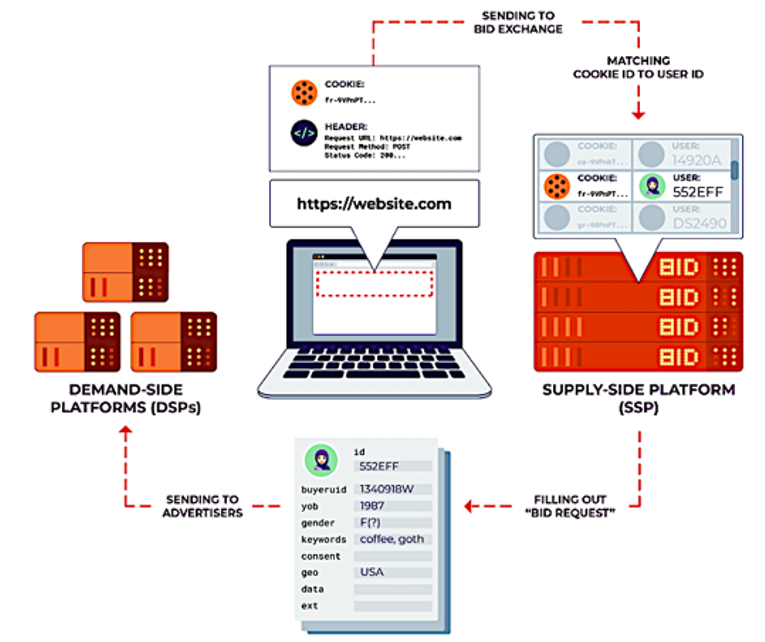How organizations monetize your personal data
We mentioned in the previous chapter that “Data is the new oil”. In the same way that oil drove economic growth in the 20th century, data will be the fuel that drives economic growth in the 21st century.Companies collect and analyze your personal data with the objective of influencing your perspectives, decisions, and actions. Companies such as Facebook, Google, Amazon, Netflix, and Spotify monetize your data by uncovering the individual propensities and tendencies buried in your data and then using those personal propensities and tendencies to influence your purchase and usage decisions… and sometimes even your opinions.Figure 2.10 shows how Google leverages your free search requests to create a market for advertisers willing to pay to place their products and messages at the top of your search results.


